Sound System Setup for Outdoor Events in Kenya
Sound System Setup for Outdoor Events in Kenya – Get Loud, Clear & Crowd-Ready with Peak Audio
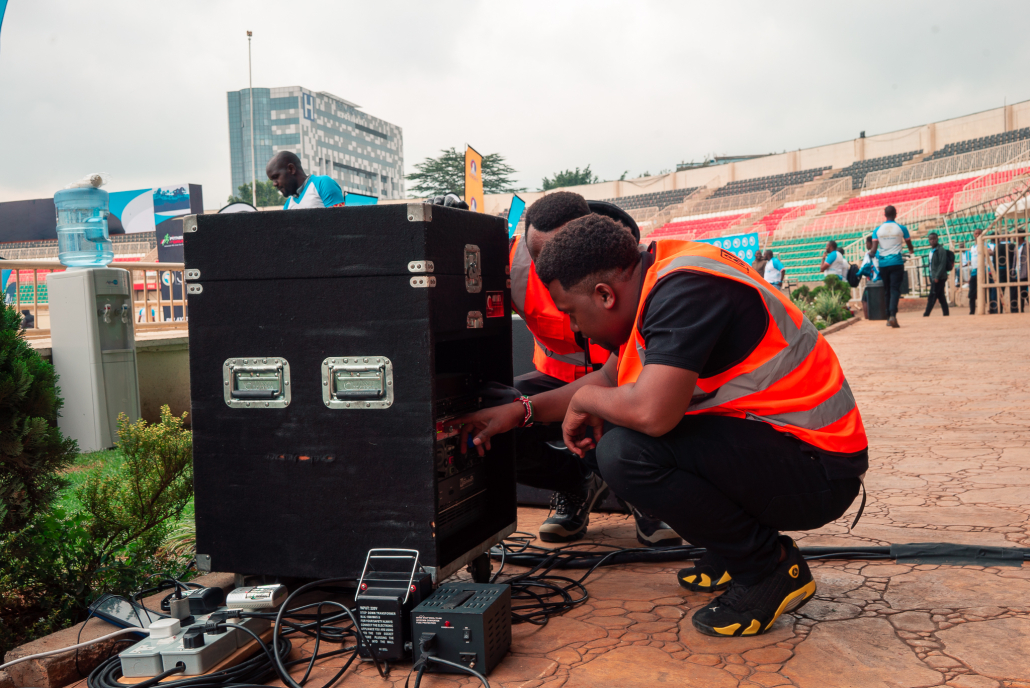
Sound System Setup for Outdoor Events in Kenya
Planning an outdoor event in Kenya—be it a wedding, political rally, church crusade, music festival, or corporate celebration—demands more than just good weather and a big crowd. The heart of any successful event lies in its sound. Unlike indoor venues, outdoor spaces present a unique challenge: no walls to contain the audio means your sound has to travel farther, fight wind, and compete with ambient noise. Without the right setup, even the best DJ or keynote speaker can go unheard.
This is where strategic sound system planning becomes crucial. Outdoor events need weatherproof, high-powered speakers, reliable wireless microphones, and expertly placed subwoofers to ensure every word and beat reaches your audience—whether they’re at the front or 50 metres back. Poor sound dispersion, echo, and volume drop-offs are common mistakes that can derail the entire experience if not handled professionally.
At Peak Audio, we bring expertise, top-tier equipment, and local experience to every outdoor event. Our team knows how to analyze your venue layout, anticipate challenges, and deliver crystal-clear sound that energizes your crowd and carries your message. From setup to real-time adjustments during your event, we make sure your sound isn’t just loud—it’s unforgettable.
1. Key Considerations for Outdoor Sound Setup
Designing a sound system for an outdoor event involves much more than simply placing speakers around a field. Unlike indoor environments, outdoor venues introduce variables such as terrain, weather, and crowd dynamics that greatly influence sound quality and system performance. Whether you’re planning a small wedding in a garden or a massive open-air crusade, understanding these factors ensures your audience hears every word and beat with clarity.
1.1 Audience Size & Layout
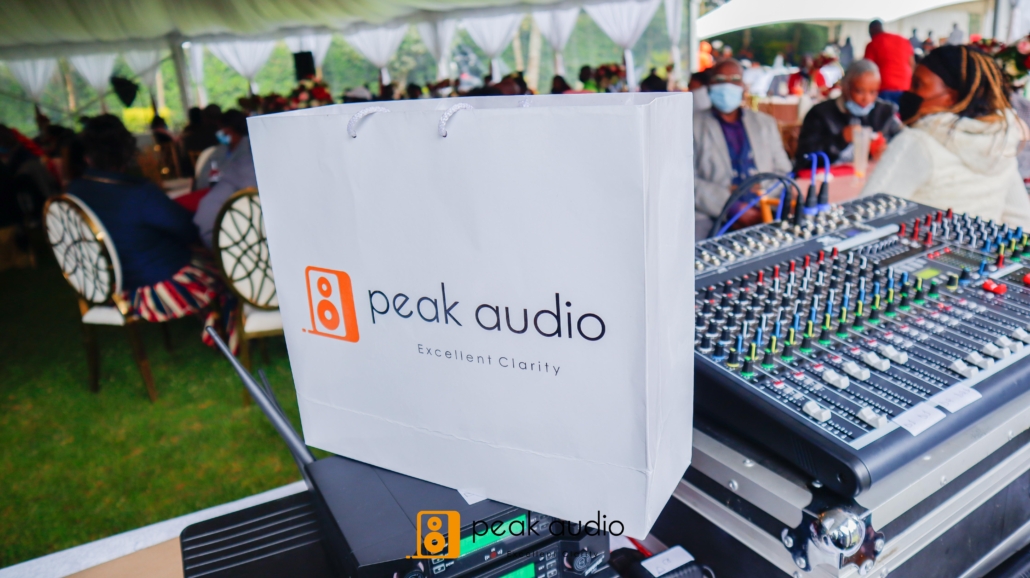
Sound System Setup for Outdoor Events in Kenya
The number of attendees and how they’re arranged within the venue play a critical role in determining the scale and structure of your outdoor sound system.
-
Accurate audience estimation: Knowing whether you’re expecting 50 guests or 10,000 allows technicians to plan for the correct number of speakers, subwoofers, delay towers, and amplifiers. Underestimating can lead to audio dropouts or poor coverage, especially for those far from the stage.
-
Sound coverage zones: A compact seating arrangement may require a central PA system, while a spread-out audience—common in large political rallies or festivals—needs zoned audio using front-of-house arrays, side-fills, and rear delay speakers to maintain clarity across distances.
-
Audience height and elevation: Events with audience members seated on hillsides or in stadium-style formats require additional sound adjustments to compensate for vertical distance and ensure consistent volume.
-
Safety and comfort: High SPL (sound pressure levels) are often required to cover large audiences, but this must be balanced to avoid overwhelming those near the speakers while still reaching those at the back.
1.2 Venue Type & Terrain
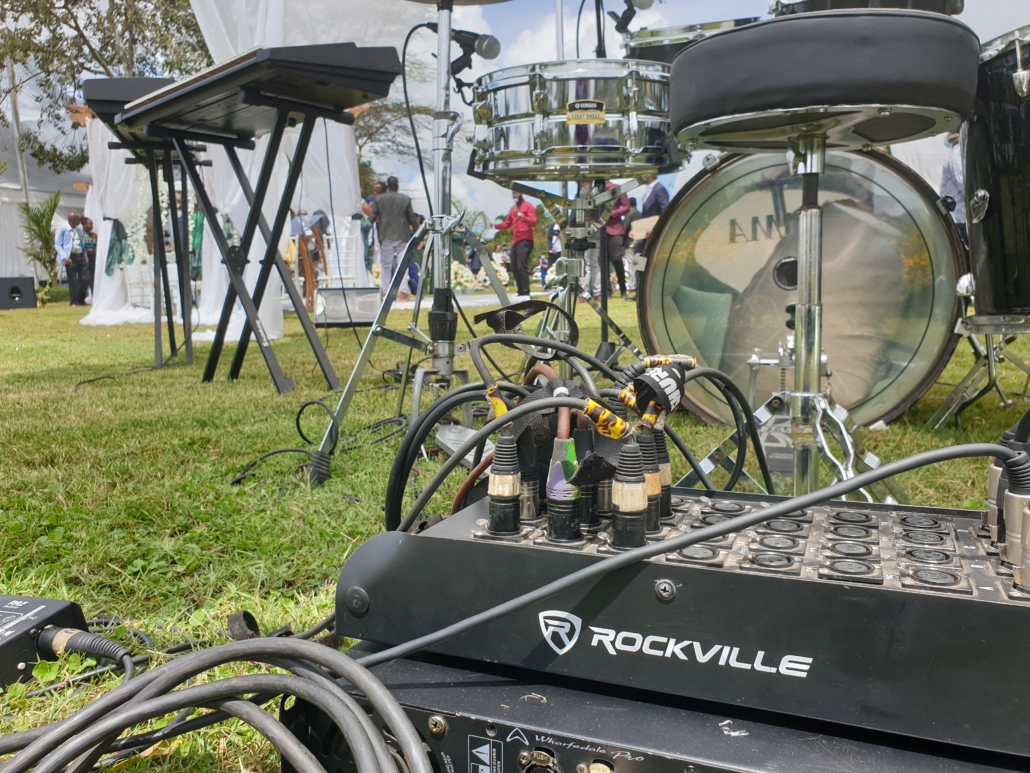
Sound System Setup for Outdoor Events in Kenya
Outdoor venues in Kenya range from coastal beaches to urban rooftops and forested parks—each offering unique acoustic challenges.
-
Different surfaces reflect sound differently: For instance, sound behaves differently on a concrete rooftop versus a grassy field. Hard surfaces may cause echo, while open grass may absorb and dampen sound, requiring EQ adjustments and additional reinforcement.
-
Speaker placement strategy: On uneven or sloped terrain, speakers need to be angled carefully or elevated using trussing or scaffold towers to achieve a uniform sound field without blind spots.
-
Power access and logistics: Rural or beachfront venues may lack reliable power, so planning for generators and backup systems is essential. Cable routing must also be managed safely to avoid trip hazards or interference.
-
Noise regulations and boundaries: For roadside fields or venues near residential zones, sound levels must be carefully controlled to avoid complaints or permit violations.
1.3 Weather & Environment
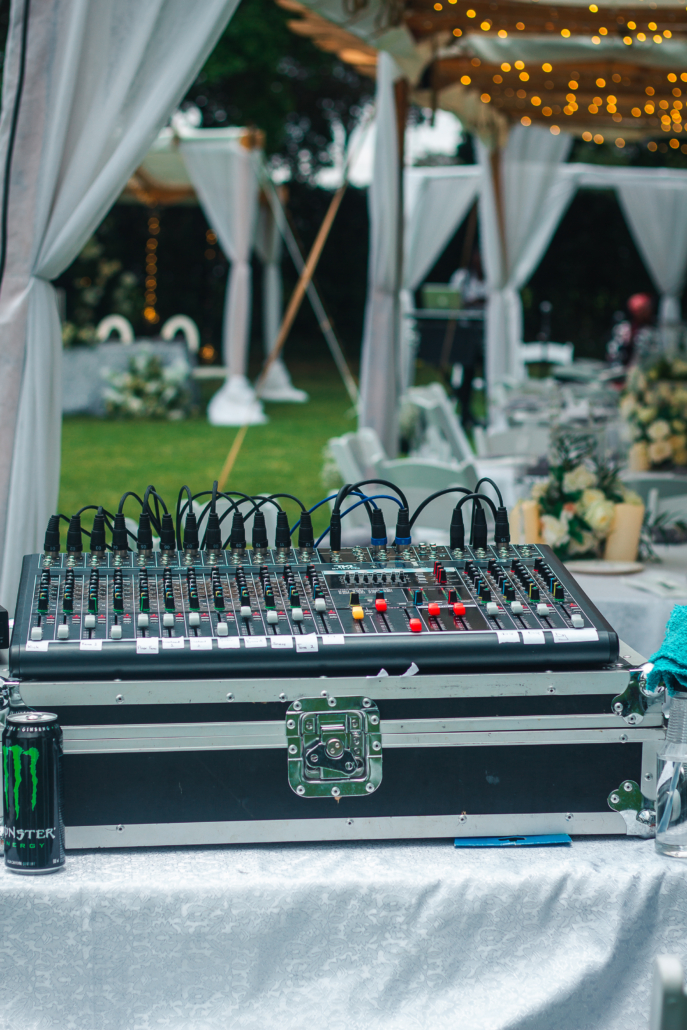
Sound System Setup for Outdoor Events in Kenya
Unpredictable weather is one of the biggest threats to outdoor sound setups. Equipment must be protected, and the setup should be designed for resilience.
-
Waterproof and weather-resistant equipment: From speakers with rain covers to mixers and amplifiers housed in sealed racks or under tents, every component must be shielded from the elements. Even morning dew can cause damage if unprotected.
-
Front-of-House (FOH) booth coverage: The FOH area, where the sound engineer controls the system, should be sheltered with waterproof tents or canopies. Visibility and ventilation should also be considered.
-
Dust and debris: For events in arid or windy areas like Maasai Mara or Turkana, dust covers and mesh filters are used to protect sensitive microphones and amplifiers. Proper sealing and routine cleaning during setup are also critical.
-
Wind considerations: High wind can interfere with sound propagation and cause distortion, especially with open microphones. Directional mic placement, windshields, and strategic speaker angling can help maintain clarity.
1.4 Event Format
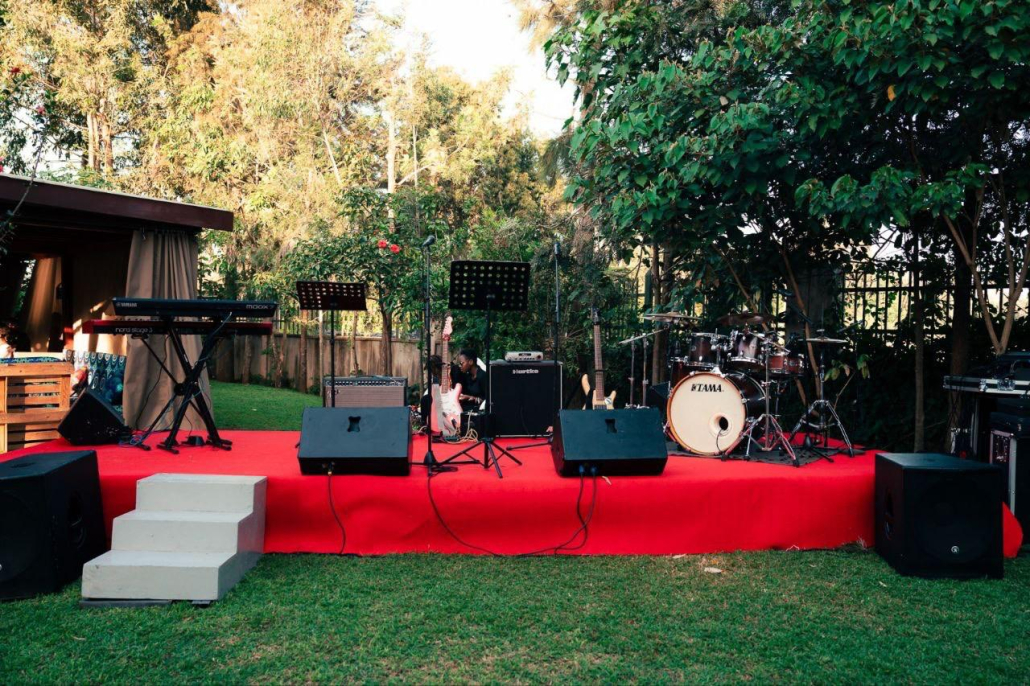
Sound System Setup for Outdoor Events in Kenya
The nature of the event significantly affects the sound requirements—from equipment selection to live mixing techniques.
-
Speech-heavy events (rallies, political campaigns, church sermons): Prioritize vocal clarity and intelligibility. This means using cardioid microphones, high-quality vocal EQ, compression, and feedback suppression systems.
-
Live music concerts: Require dynamic sound ranges, balanced instrument mixing, and enhanced bass performance. Multiple inputs from instruments, vocalists, and backing tracks demand complex mixers and real-time monitoring.
-
Hybrid events (church services, fundraisers, weddings): Often combine speeches, live bands, recorded tracks, and audience participation. These events need flexible sound systems with multiple input types, zone control, and skilled technicians capable of quick transitions.
-
Audience participation: In gospel events or interactive performances, stage monitoring (for performers) and area microphones (for capturing ambient audience responses) are used to create an immersive sound experience for both live and online audiences.
Planning an outdoor sound setup goes far beyond choosing loudspeakers. From understanding your audience size to adjusting for venue terrain and anticipating weather conditions, each factor must be accounted for to ensure professional and uninterrupted sound delivery. At Peak Audio, we specialize in designing outdoor sound systems that are powerful, flexible, and resilient—guaranteeing that your message or music reaches every ear with perfect clarity, no matter the setting.
2. Essential Sound Equipment for Outdoor Events
Outdoor events present unique sound challenges that require more powerful, weather-resistant, and scalable audio solutions than indoor venues. Whether you’re organizing a beach concert, political rally, gospel crusade, or a wedding in the hills of Limuru, having the right audio gear ensures your message and music reach every listener with clarity, warmth, and impact. Below is a breakdown of the core sound equipment you need for a successful outdoor setup.
2.1 PA Speakers

Sound System Setup for Outdoor Events in Kenya
Public Address (PA) speakers are the heart of any sound system. For outdoor events, they must be loud, clear, and capable of projecting over long distances.
-
High-powered and long-throw capabilities: Outdoor environments lack the walls that help reflect sound indoors. That means you need speakers with enough throw distance to reach the entire audience. Line array systems are ideal for large events (1,000+ people) because they deliver consistent volume across wide areas. For smaller events (e.g., weddings or garden parties), active powered speakers offer convenience and sufficient reach.
-
Ground-stacked vs. flown setups: Speakers can be stacked on subwoofers or stands (ground-stacked) or suspended from trusses (flown) to increase coverage and reduce obstacles. Flown systems are preferred for festivals or crusades, where even sound distribution is critical.
-
Weather durability: Outdoor speakers should have weather-resistant casings or be protected with covers and shields to withstand elements like dust, dew, or sudden rain.
2.2 Subwoofers
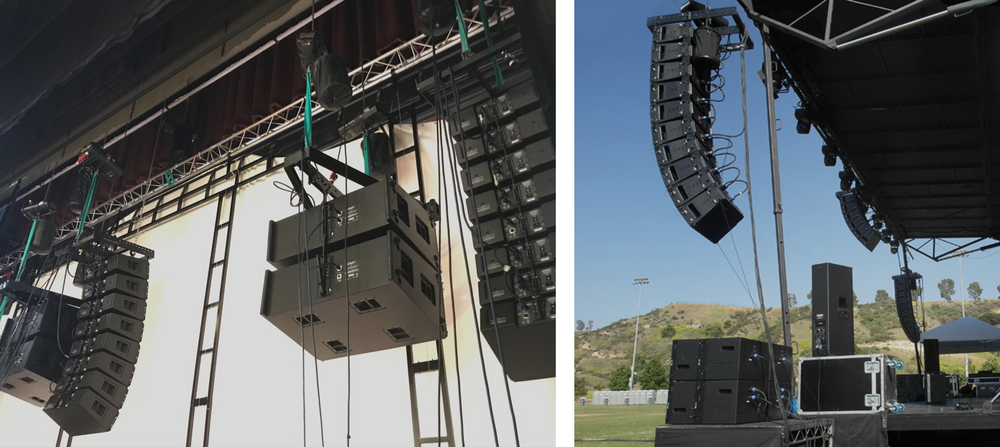
Subwoofers handle low-end frequencies—bringing energy and fullness to your event’s soundscape.
-
Bass reinforcement for impact: Subwoofers are essential for concerts, DJ events, and gospel crusades where music and emotional expression rely heavily on bass. Without them, the sound feels thin, especially in open air.
-
Directional bass setup: Proper positioning helps prevent low-end muddiness and ensures even distribution. Cardioid configurations or clustered setups may be used to control bass bleed onto stage mics.
-
Pairing with tops: Subwoofers are paired with mid-high speakers (tops) using crossovers to balance the sound spectrum. This pairing is crucial for clear vocals and powerful music.
-
Multiple subs for large audiences: For bigger crowds, you’ll need dual 18” or 21” subs arranged in stacks or arrays to keep the bass consistent across large areas.
2.3 Monitors (Stage Wedges or In-Ears)
Monitors allow performers, speakers, and worship leaders to hear themselves and the music clearly on stage—an often-overlooked yet critical part of sound design.
-
Stage wedges for live performers: Floor monitors (wedges) are angled speakers placed in front of musicians or speakers to give them real-time feedback without the delay heard in the main PA system. These are ideal for live bands, choirs, and preachers.
-
In-ear monitoring systems (IEMs): For clean stages and better mobility, many modern artists and pastors use wireless IEMs. These eliminate feedback issues and give each performer a personal mix through earpieces.
-
Separate monitor mixes: A dedicated monitor mix engineer may be needed to create custom mixes for each artist or speaker, especially when dealing with multiple performers.
-
Feedback control: Monitors must be carefully equalized to prevent audio feedback, particularly in windy or echo-prone open spaces.
2.4 Mixing Console
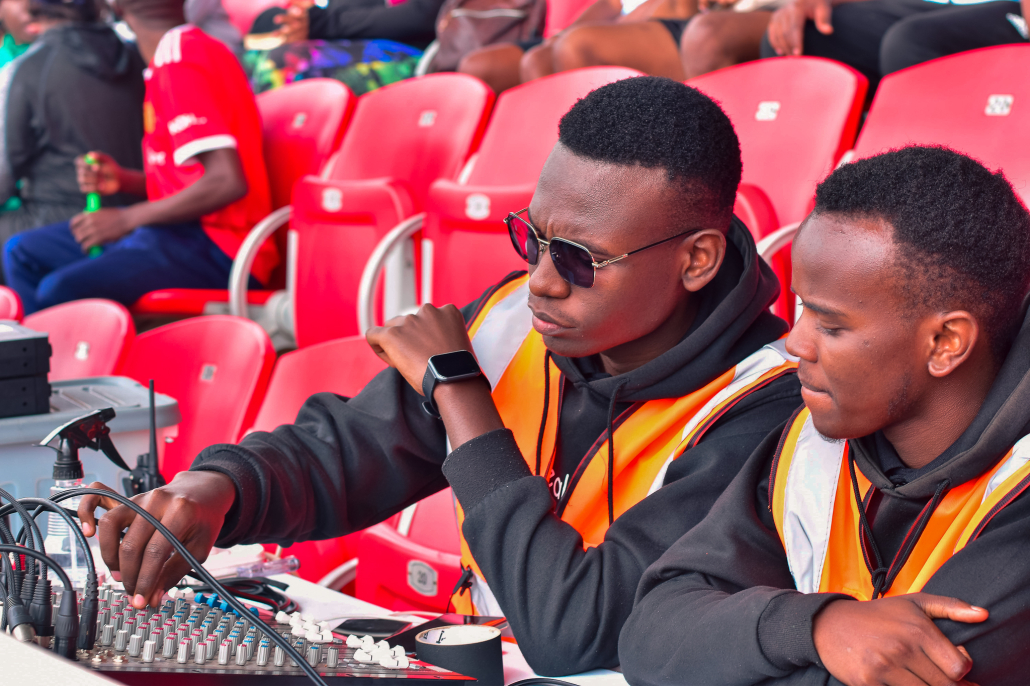
Sound System Setup for Outdoor Events in Kenya
The mixing console (or sound desk) is the command center of your audio setup, blending and controlling all sound sources.
-
Analog vs. digital mixers: Analog consoles are simple and reliable, suitable for straightforward setups. Digital mixers offer more flexibility, including built-in effects, multiple scenes, wireless control via tablets, and more precise EQ. These are ideal for complex or large-scale events.
-
FOH (Front of House) positioning: The console is typically positioned at FOH—centrally located within the audience—for optimal sound mixing based on what guests actually hear.
-
Input and output capacity: Choose a mixer with enough channels to accommodate all your sources—vocals, instruments, background music, videos, etc.
-
Live mixing in outdoor conditions: Protection from weather is essential; consoles must be housed in waterproof FOH tents or under covered booths to avoid damage from rain or dust.
2.5 Microphones

Sound System Setup for Outdoor Events in Kenya
Quality microphones are the frontline tools for capturing sound, whether it’s vocals, instruments, or ambiance.
-
Wireless handheld microphones: Ideal for MCs, pastors, and singers who move around the stage. Look for UHF or digital wireless systems with strong signal range and minimal interference.
-
Lapel (lav) mics and headsets: These are perfect for speakers who need hands-free mobility, such as preachers, trainers, or wedding officiants. Headsets provide more stability in windy or active settings.
-
Instrument microphones: Dynamic and condenser mics are used to mic up drums, guitars, horns, and keyboards—essential for live bands.
-
Outdoor durability: Rugged, weather-resistant models are preferred. Windshields or foam covers help reduce wind noise and plosives, especially for open mics.
2.6 Cables, DI Boxes & Accessories

Sound System Setup for Outdoor Events in Kenya
A great sound system is only as reliable as its infrastructure. Cables, connectors, and accessories play a silent but critical role in ensuring everything functions smoothly.
-
Weather-proof cabling and protection: Use high-quality shielded cables with robust connectors, and ensure that all connections are protected with gaffer tape, cable ramps, or waterproof sleeves to prevent tripping and water ingress.
-
DI (Direct Input) boxes: These convert instrument signals (like keyboards or acoustic guitars) to balanced signals suitable for long cable runs without interference—a must for clean sound on outdoor stages.
-
Mic stands and speaker poles: Adjustable, weighted stands ensure microphones and speakers stay upright even in windy conditions.
-
Stage boxes and snakes: These multi-channel cable systems simplify stage connections and reduce clutter, allowing for fast, organized setup and teardown.
2.7 Power Supply & Backup
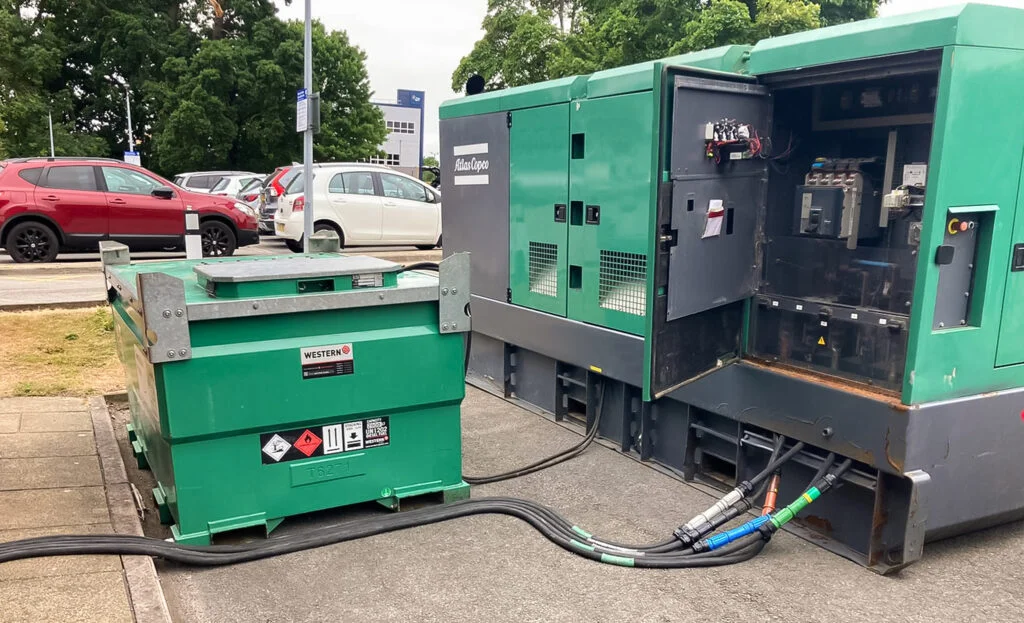
Sound System Setup for Outdoor Events in Kenya
Powering an outdoor sound system reliably is mission-critical. A single power failure can derail an entire event.
-
Generator or inverter backup systems: For remote locations or power-unstable areas, generators with sufficient wattage and fuel backup are essential. Silent generators are ideal to reduce noise pollution. Inverters with battery banks are also used for smaller events or secondary backup.
-
Dedicated power lines for sound: Audio gear should be powered separately from lighting or catering to avoid interference, voltage drops, or system overloads.
-
Surge protectors and voltage regulators: These protect sensitive audio equipment from spikes or fluctuations, especially during generator transitions or sudden power changes.
-
Power distribution units (PDUs): These are used to route and manage power efficiently across the stage and FOH areas, preventing overloads and helping with quick fault isolation.
Outdoor events require a precise and powerful combination of equipment that can adapt to changing conditions while delivering pristine sound to every corner of your venue. From speakers and subwoofers to cables and backup power, each piece plays an essential role. At Peak Audio, we offer complete outdoor sound solutions—expertly planned, professionally delivered, and tailored to the unique challenges of Kenya’s diverse landscapes and event types.
3. Sound System Setup Process
Delivering great sound at any event isn’t just about having high-end equipment—it’s about how well it’s planned, installed, and managed in real time. The sound system setup process involves several technical and logistical steps, all of which ensure that your audience experiences clean, clear, and immersive audio from start to finish. Here’s how a professional outdoor sound setup is executed from the ground up:
3.1 Site Survey & Layout Design
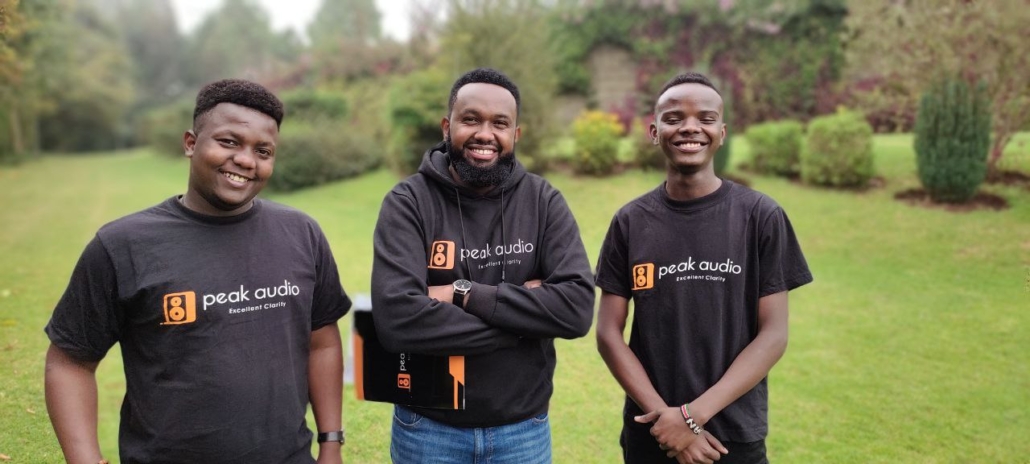
Sound System Setup for Outdoor Events in Kenya
Before any equipment is delivered, the site must be evaluated to plan an effective audio design that suits the venue’s terrain, size, and event goals.
-
Initial site walkthrough: Sound engineers and technicians visit the venue (e.g., stadium, garden, beachfront, or field) to assess critical factors like audience layout, elevation changes, power source locations, and access paths for gear.
-
Speaker and FOH (Front of House) mapping: The team marks out ideal locations for main PA speakers, subwoofers, delay towers (for large spaces), and monitors. The FOH control area—where the mixing console and engineers are stationed—is also positioned centrally for optimal sound perception.
-
Environmental considerations: During this survey, the team evaluates exposure to sun, wind, rain, and dust. This information is used to determine what protective gear or reinforcement is needed (e.g., tents for FOH, raised stages, waterproof casings).
-
Power layout planning: Reliable access to power is mapped out, including where to position generators, backup inverters, and distribution lines, ensuring each sound zone has stable and independent electricity.
3.2 Speaker Placement & Coverage Planning
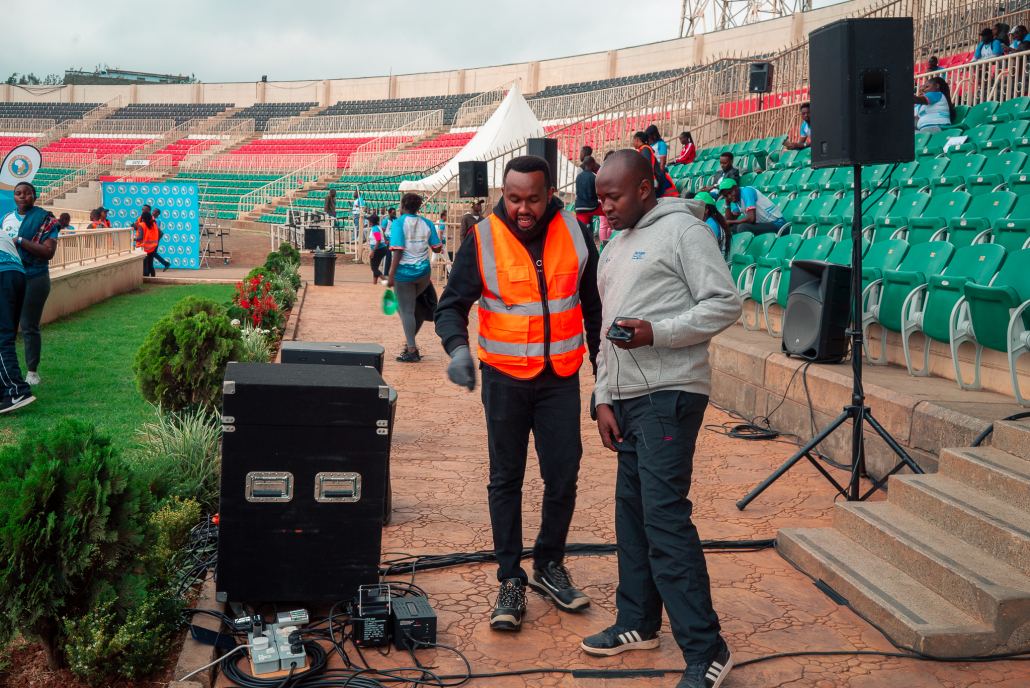
Sound System Setup for Outdoor Events in Kenya
Once the layout is finalized, speaker setup begins. Precision in speaker placement ensures everyone hears the same quality of sound, no matter where they’re seated or standing.
-
Main speaker alignment: Main PA speakers are placed at angles and heights that project sound across the widest area possible without interference. Line array systems may be flown from trusses or stacked to increase throw distance in large venues.
-
Use of delay speakers: For events with more than 500 attendees or venues over 40 meters deep, delay speakers are installed mid-audience to compensate for sound travel time. These are time-aligned with the main system to prevent echo or “slapback.”
-
Avoiding dead zones: The audio team walks the venue during setup to test sound projection paths, making micro-adjustments to prevent quiet spots or overlapping frequencies. Side fills and rear fills may be used in multi-zone layouts.
-
Subwoofer deployment: Subwoofers are strategically placed for even bass coverage—often centered in front of the stage or in cardioid clusters to avoid low-frequency buildup on the platform.
3.3 Soundcheck & Tuning
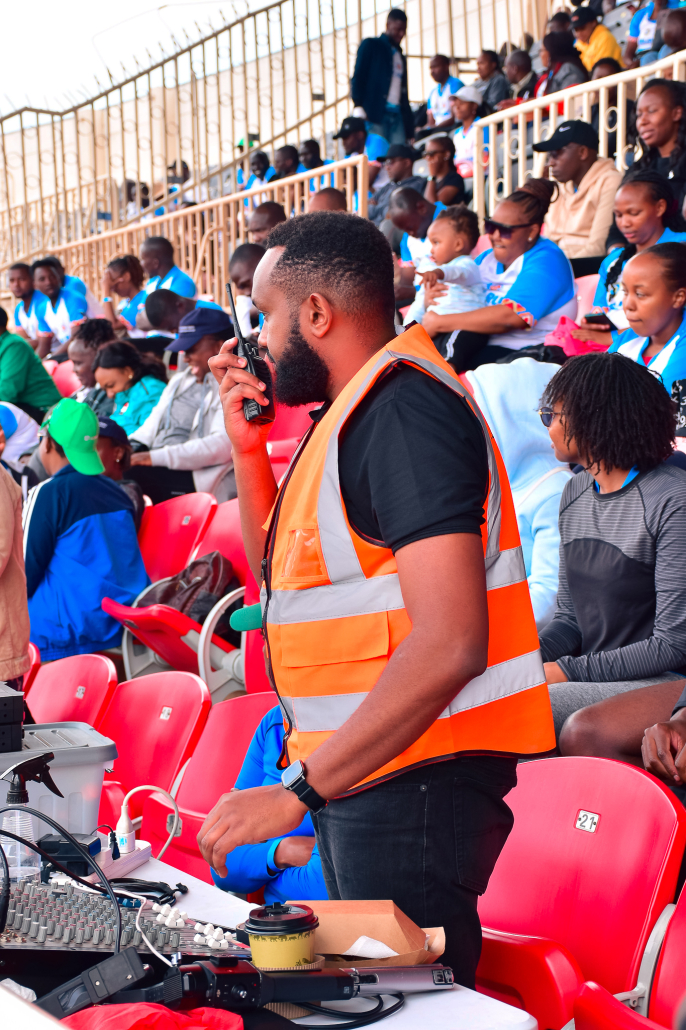
Sound System Setup for Outdoor Events in Kenya
Before the crowd arrives, the entire system undergoes calibration, testing, and fine-tuning to deliver balanced sound across the frequency spectrum.
-
Gain structure setting: Engineers begin by adjusting gain levels at each stage (mic, mixer, amp) to avoid distortion or noise. This sets a clean base signal.
-
Equalization (EQ): Each microphone, instrument, and playback channel is equalized for tone clarity. For example, high-pass filters are applied to vocals to remove low-end rumble, while instruments may be enhanced with mid-boosts or treble tweaks.
-
Compression & effects setup: Compressors are configured to manage dynamic range—helping vocals stay audible even when the speaker or singer’s volume fluctuates. Reverb or delay may be applied for musical performances.
-
Anti-feedback filters: Notch filters and feedback eliminators are activated to suppress squeals, especially for vocal mics in open-air environments.
-
Testing from multiple audience spots: Engineers move through the venue—front, center, sides, and back—to listen for inconsistencies. Tweaks are made live to ensure sound is full and intelligible everywhere.
3.4 Monitoring During the Event
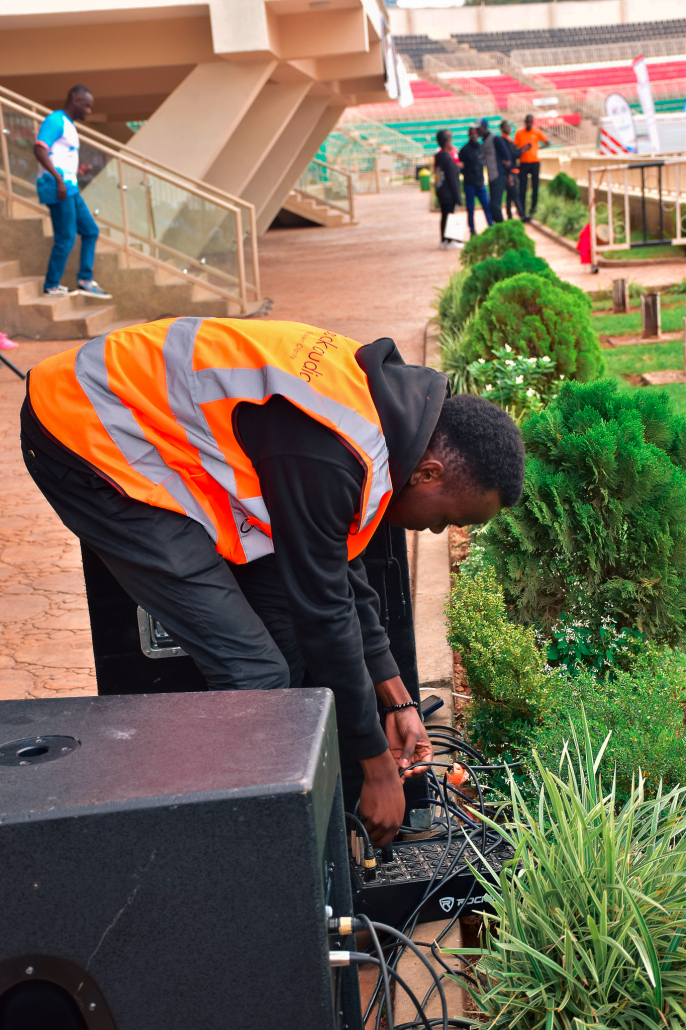
Sound System Setup for Outdoor Events in Kenya
Even a perfectly set sound system needs continuous supervision to adapt to live variables—like crowd noise, mic changes, or sudden environmental shifts.
-
Live sound engineer at FOH: A dedicated technician operates the mixing console throughout the event. They monitor levels in real time, handle live transitions, and adjust EQ or gain on-the-fly as performers change or speeches evolve.
-
Remote control and wireless mixing: Using apps and tablets, engineers can step away from the booth and walk into the crowd to adjust the sound where it matters most—especially helpful in large venues or hybrid stage setups.
-
On-stage monitoring: A separate engineer may manage monitor mixes for performers, adjusting feedback levels or in-ear systems based on requests from stage personnel.
-
Troubleshooting readiness: Spare mics, cables, and backup gear are always on standby in case of technical failure. Cable management is routinely checked, and extra surge protectors or power backups are monitored during critical moments.
A flawless outdoor sound experience doesn’t happen by accident—it’s the result of detailed planning, expert setup, and active monitoring throughout your event. From the moment the site is surveyed to the last speech or song, each phase of the sound system setup process is designed to ensure your audience hears every word, note, and beat with clarity and power. With Peak Audio’s experienced crew and cutting-edge technology, you get more than sound—you get peace of mind.
4. Common Mistakes to Avoid in Outdoor Sound Setup
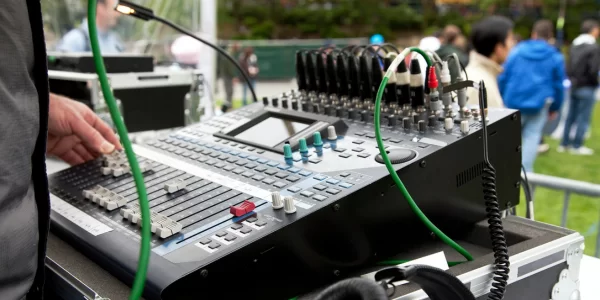
Sound System Setup for Outdoor Events in Kenya
Even the best equipment can’t save an event from poor planning. Outdoor environments introduce complexities that many organizers and even technicians overlook—leading to sound failures, audience dissatisfaction, and event delays. To ensure your outdoor event sounds as good as it looks, it’s important to avoid the following common mistakes during the setup process.
4.1 Underestimating Power Needs
Failing to plan for sufficient and stable power is one of the most frequent—and costly—errors in outdoor event production.
-
Generator miscalculation: Many organizers rent a basic generator based on lighting needs alone, forgetting that sound systems—especially large speakers, subwoofers, and mixers—require significant, steady wattage. If the generator can’t keep up, you’ll hear power hums, deal with amplifier shutdowns, or worse, blow your system mid-event.
-
Not accounting for peak loads: Equipment like bass-heavy subwoofers and digital amplifiers may draw more power during loud music or climax moments. A 5KVA generator might seem enough on paper but could struggle under dynamic loads, causing brownouts (low voltage events) that distort or shut down the sound.
-
Solution: Always overspec your power supply. Go for a generator with at least 20–30% headroom beyond your total wattage needs. Use voltage regulators and power conditioners to protect sensitive gear, and split power sources for sound, lighting, and catering.
4.2 Poor Weather Planning
Outdoor events are always at the mercy of the elements. One short rainfall or gust of wind can ruin thousands of shillings’ worth of AV gear—or even end the event.
-
Lack of rainproof protection: Speakers, mixers, microphones, and cables are not waterproof. Without proper shielding—such as plastic tents for the FOH booth, waterproof tarpaulin covers, or equipment canopies—you risk water damage that can cause permanent failure or electrical hazards.
-
Ignoring wind hazards: Strong gusts can topple unsecured speaker stands, wobble lighting trusses, or blow over mic stands. Heavy-duty sandbags, truss weights, and stable rigging are essential to anchor equipment, especially in open fields or beach locations.
-
Unsafe cable placement: Water and electricity don’t mix. Cables that run across the grass or dirt need elevation, shielding, or protective ramps to avoid soaking, tripping hazards, or damage from foot traffic and vehicles.
-
Solution: Always assume weather will change. Carry waterproof gear, wind screens for mics, weather-sealed power connectors, and elevated cable trays. Have a weather monitoring app on standby and assign a crew member to watch forecasts.
4.3 Wrong Equipment for the Space
Using the wrong scale or type of equipment for your venue is a setup misfire that can make or break your event’s impact.
-
Undersized speakers for large venues: Bringing compact, indoor-grade PA speakers to a field event with 500+ attendees is a recipe for disappointment. Sound will get lost in the open air, attendees will struggle to hear, and your event will feel amateur—even if everything else is perfect.
-
Inadequate subwoofers for music-heavy shows: Music events like gospel concerts or DJ sets need strong bass presence. If your system can’t deliver, the crowd loses energy, and your performers won’t have the sonic foundation to shine.
-
Overpowering small venues: On the flip side, using massive line arrays in a courtyard can overwhelm the audience, cause distortion, and even violate noise ordinances.
-
Solution: Match your system to your venue and audience size. A sound technician should calculate the venue’s throw distance and design the setup accordingly—factoring speaker wattage, coverage angle, SPL needs, and crowd density.
4.4 No FOH Position
The Front of House (FOH) is not just where the mixing desk sits—it’s the control tower of your entire sound system. Neglecting it is a major mistake.
-
Poor mixer positioning: Placing the mixer backstage, inside a tent, or at the side of the venue means the sound technician can’t accurately hear what the audience is hearing. This leads to unbalanced sound, feedback issues, and delayed reactions to audio problems.
-
Lack of sightlines: The FOH needs a direct line of sight to both the stage and the speakers. Without visual and acoustic alignment, the technician is flying blind, unable to respond to performers or audience cues.
-
Understaffed FOH: Sometimes organizers assume the mixer can be left on a static setting or run by a DJ. But live sound—especially for hybrid events—requires constant adjustment and monitoring by a skilled operator.
-
Solution: Always place the FOH centrally, behind or within the crowd zone, aligned with the speaker path. Ensure it’s covered, elevated if necessary, and operated by a professional who can monitor levels and cues in real time.
Outdoor sound setup requires a level of technical precision and environmental foresight that goes far beyond indoor gigs. By avoiding common mistakes like under-powering your gear, ignoring weather precautions, using mismatched equipment, or misplacing your FOH, you protect your investment—and your reputation. With a reliable partner like Peak Audio, you’ll never have to learn these lessons the hard way. We plan, install, and manage every aspect of outdoor sound with professionalism and foresight, so your event sounds incredible—rain or shine.
5. Why Choose Peak Audio for Outdoor Sound Setup in Kenya
Planning an outdoor event in Kenya comes with unique challenges—ranging from unpredictable weather to varied terrain and large, dispersed audiences. At Peak Audio, we bring unmatched experience, top-tier equipment, and a reliable crew to ensure your sound setup is nothing short of exceptional. Here’s why we’re the preferred partner for outdoor sound in Kenya.
5.1 Experience With All Types of Outdoor Events

Sound System Setup for Outdoor Events in Kenya
From intimate ceremonies to massive open-air gatherings, Peak Audio has a proven track record across all types of outdoor events in Kenya.
-
Weddings and Private Ceremonies: We provide elegant audio setups tailored for romantic garden weddings, beach ceremonies, and reception speeches—ensuring clarity without overwhelming the setting.
-
Gospel Crusades and Religious Events: Whether it’s a rural outreach or a multi-day city crusade, we deliver powerful sound systems that amplify both spoken word and worship music, helping ministries connect with large crowds.
-
Political Campaigns and Rallies: We’ve supported campaign trails and county launches with mobile PA systems, podium microphones, crowd coverage planning, and backup generators for uninterrupted speeches.
-
Festivals and Corporate Outdoor Events: From Blankets & Wine to company family days, our setups scale to fit your event’s theme—balancing performance, sound quality, and aesthetic integration.
5.2 Professional Sound Engineers & Crew
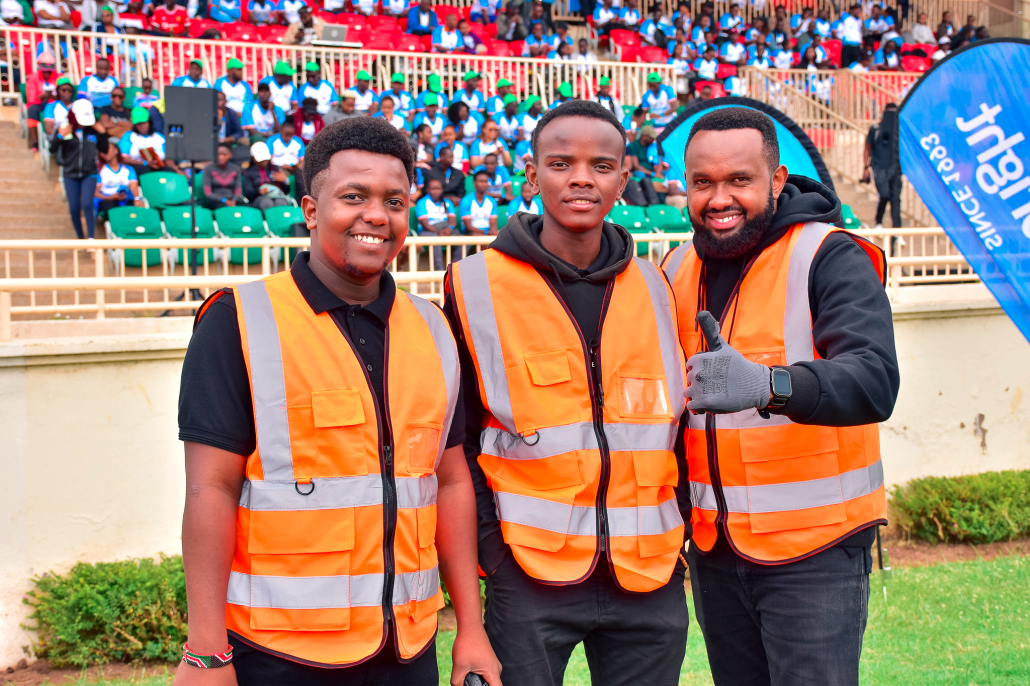
Sound System Setup for Outdoor Events in Kenya
Behind every Peak Audio setup is a highly trained team that handles every sound-related task with precision and professionalism.
-
Technical Planning & Setup: Our crew arrives early to survey the venue, deploys equipment safely, and ensures all gear is optimized for the environment—be it hilly, flat, dusty, or humid.
-
Live Sound Mixing & EQ Tuning: Our engineers fine-tune levels in real time, apply compression and EQ filters, and prevent audio feedback or dropouts even as the program evolves.
-
On-Site Monitoring & Troubleshooting: We maintain crew presence throughout the event to resolve any sound issues instantly—minimizing disruptions and ensuring seamless transitions between speakers or performances.
-
Collaborative Approach: Our technicians work smoothly with your event planners, MCs, DJs, or video teams to coordinate cues, prevent clashes, and enhance overall event execution.
5.3 High-Quality Equipment
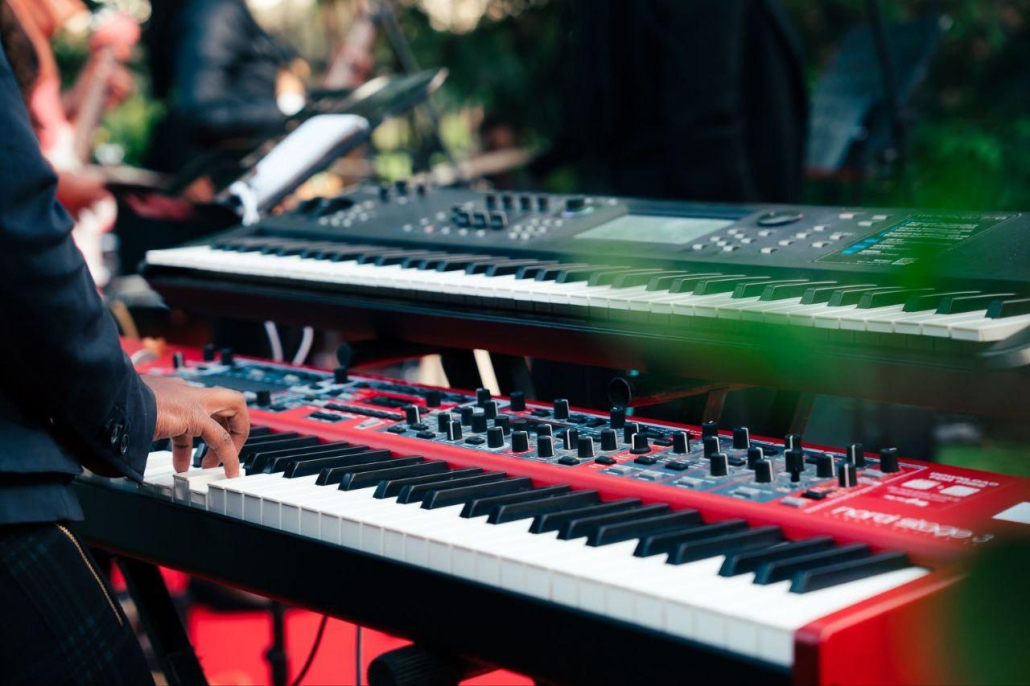
Sound System Setup for Outdoor Events in Kenya
We invest in reliable, industry-grade sound equipment to match Kenya’s demanding outdoor event environments.
-
Line Array and Long-Throw Speaker Systems: Designed to project sound clearly across wide, open spaces—perfect for stadiums, fields, beaches, or parking lots.
-
Wireless Microphones by Shure & Sennheiser: Trusted globally for signal strength, clarity, and durability. Ideal for roaming speakers, preachers, performers, or MCs.
-
Allen & Heath Digital Mixers: These mixers allow us to manage multiple input sources with precision—ideal for events with choirs, live bands, and multiple speaker sessions.
-
Weather-Resistant Accessories & Power Solutions: From waterproof speaker covers to reliable generators and surge-protected cabling, we ensure resilience in all weather conditions.
5.4 All-in-One Packages With Lighting & Staging
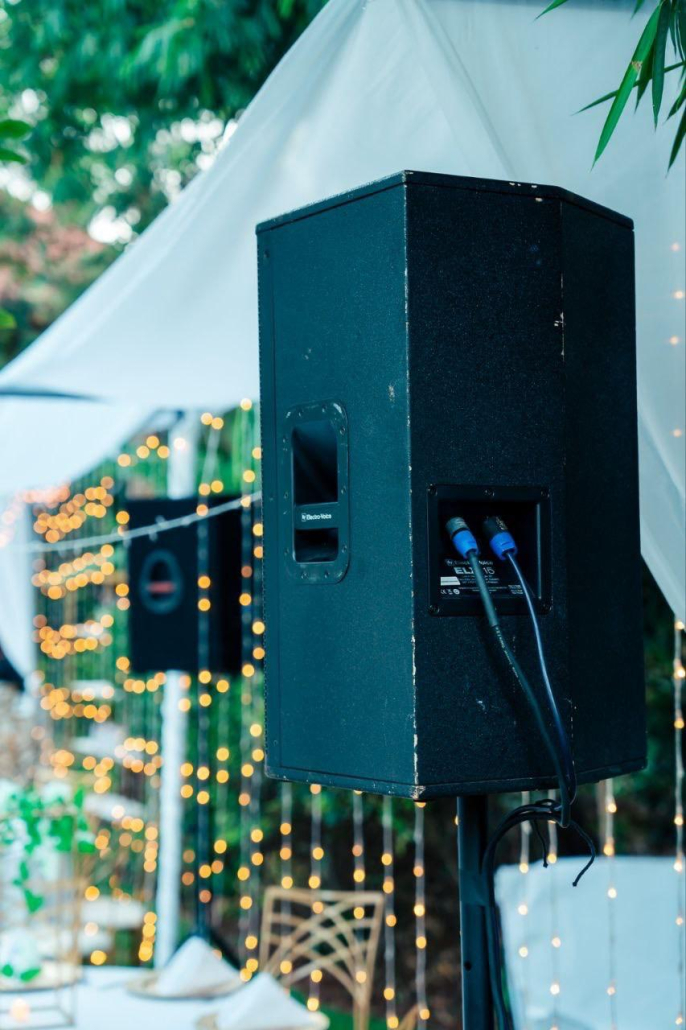
Sound System Setup for Outdoor Events in Kenya
Peak Audio offers complete production solutions—not just sound—saving you time and cost while ensuring cohesive execution.
-
Bundled Lighting Systems: We integrate stage wash lighting, LED ambient effects, and spotlighting that work in harmony with the audio setup to enhance stage presence and visual appeal.
-
Stage and Risers: Whether you need a pulpit for a church rally, a raised platform for a keynote speaker, or a runway for a fashion show, our portable staging options are sturdy, safe, and scalable.
-
Power Distribution & Technical Infrastructure: All our outdoor sound setups come with backup generators, power distribution units, cable protection, and voltage regulation to ensure uninterrupted performance.
-
One-Stop Solution: You get a single service provider for all your AV, lighting, and staging needs—making coordination easier, reducing errors, and optimizing budget through bundled pricing.
Peak Audio stands out as Kenya’s go-to expert for outdoor sound setup. With extensive event experience, skilled sound engineers, world-class equipment, and all-in-one production packages, we turn open-air venues into high-quality audio environments. Whether you’re planning a gospel revival, wedding reception, political rally, or beachside concert—Peak Audio ensures your message is heard clearly, confidently, and without compromise.
6. FAQs – Outdoor Sound System Setup in Kenya
Planning an outdoor event involves many moving parts, and sound setup is often one of the most important—and most asked-about—elements. Below are answers to some of the most frequently asked questions from clients planning events in Nairobi, Mombasa, Kisumu, Naivasha, and beyond.
6.1 How much does it cost to hire a sound system for an outdoor event in Kenya?
The cost of hiring a professional outdoor sound system in Kenya varies widely depending on audience size, event duration, type of setup, and location. Here’s a rough guide:
-
Small events (50–300 people): Expect prices starting from KES 25,000–60,000, including speakers, microphones, mixer, and basic setup.
-
Medium events (300–1,000 people): Budget around KES 60,000–150,000 depending on the number of sound zones, stage requirements, and equipment brand.
-
Large-scale events (1,000–5,000+ attendees): Professional concert-grade systems can range from KES 150,000 to over KES 500,000, including line arrays, subwoofers, monitors, FOH booth, and dedicated technicians.
-
Add-ons like generator hire, stage lighting, live streaming, interpretation booths, or trussing will affect the total.
At Peak Audio, we provide customized, transparent quotes based on your needs—no hidden fees, just full clarity and professional service.
6.2 What’s the ideal sound setup for 300, 1,000, or 5,000 attendees?
The ideal sound setup depends on the size of the audience, venue layout, and event format. Here’s a quick breakdown:
-
For 300 attendees:
-
A pair of 12″ or 15″ powered speakers, one or two subwoofers, 2–4 wireless microphones, and a compact mixer work well.
-
Suitable for weddings, school events, or company town halls.
-
-
For 1,000 attendees:
-
Use dual PA stacks with mid-high speakers and 2–4 subs, a digital mixer, 4–8 wireless mics, and on-stage monitors for performers or speakers.
-
Add delay speakers for deeper venues or split crowd areas.
-
-
For 5,000+ attendees:
-
You’ll need a line array speaker system, multiple delay towers, subwoofer arrays, and a large-format digital mixing console.
-
Multiple zones, advanced signal distribution, and experienced FOH engineers are essential to maintain clarity and prevent feedback.
-
Every setup is site-tested and adjusted by our team to suit your specific crowd and environment.
6.3 Do you provide backup generators and rain covers for your equipment?
Yes, absolutely.
-
Backup generators: For remote or power-unstable locations, we offer silent generators rated to handle full audio load, plus extra power for stage lighting, video, or catering where needed.
-
Rain and weather protection: Our outdoor setups include rain covers for speakers, weatherproof cable protection, and canopies for mixers and control booths. We also provide waterproof tents for FOH and stage areas to keep equipment and crew safe.
-
We also assess wind direction, terrain, and sun position during setup planning to avoid equipment damage or performance issues.
Your event runs no matter the weather—safely and professionally.
6.4 Can Peak Audio set up in remote locations outside Nairobi?
Yes—we cover the entire country.
-
We have successfully executed outdoor sound setups in Naivasha, Nakuru, Eldoret, Kisumu, Mombasa, Narok, Diani, and Turkana, including rural churches, national parks, lakesides, and forested areas.
-
Our team conducts pre-event site visits or remote planning (with Google Maps or venue schematics) to understand the terrain, power access, and delivery logistics.
-
We bring everything needed—including PA systems, generators, cabling, towers, and technicians—so you don’t have to worry about sourcing anything locally.
-
Transport and crew travel costs are included in your quote, with no surprises.
We specialize in making remote event sound systems feel world-class.
6.5 How early should we book outdoor sound services?
To ensure availability and allow for thorough planning, we recommend booking as early as possible:
-
For major events (1,000+ guests or complex multi-day events): At least 4–6 weeks in advance is ideal.
-
For mid-size or regional events (300–1,000 guests): 2–3 weeks in advance gives us ample time to conduct site assessments and coordinate with other vendors.
-
For small events (below 300 guests): 1 week in advance is usually enough, though early booking still gives you access to better pricing and availability.
Last-minute bookings are possible depending on schedule—but equipment and crew availability may be limited. Early planning also ensures enough time for permits, rehearsals, and weather contingency planning.
If you’re planning an outdoor event in Kenya, don’t leave your sound setup to chance. From budget-friendly solutions to large-scale concert systems, Peak Audio has the experience, equipment, and team to deliver powerful, professional results—anywhere in the country. If you still have questions, we’re just a call away.
Be Heard, Be Felt, Be Remembered with Peak Audio
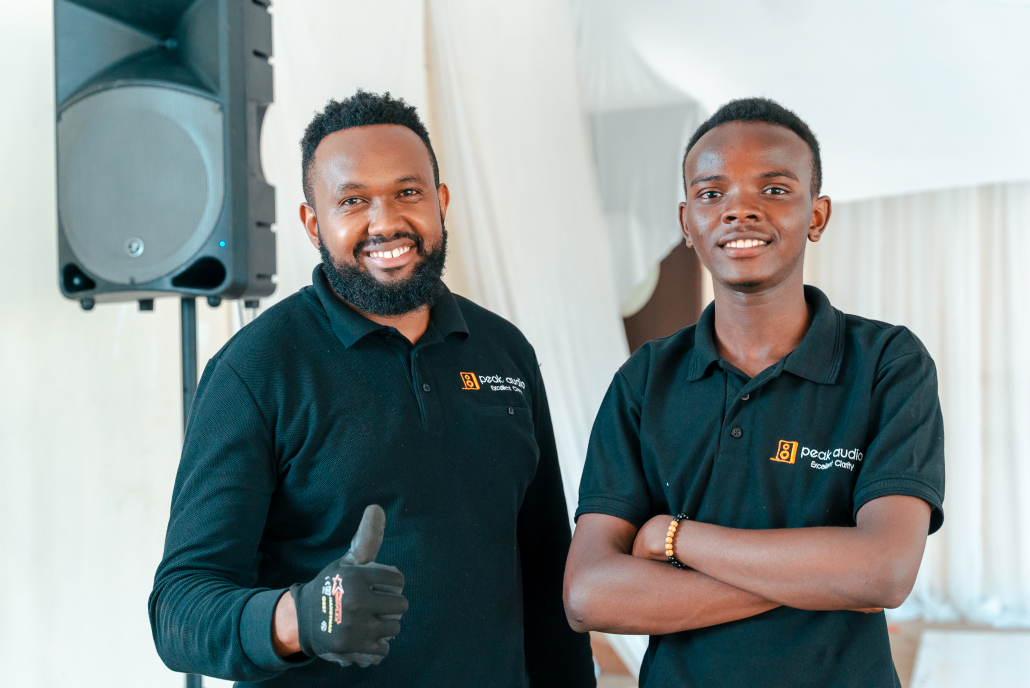
Sound System Setup for Outdoor Events in Kenya
Outdoor events are thrilling and full of potential—but they also come with unique technical challenges, especially when it comes to delivering crystal-clear sound in open environments. From shifting weather to sprawling venues, every detail matters when your goal is to keep audiences engaged and immersed. That’s why choosing the right audio partner isn’t just important—it’s essential.
With Peak Audio, you get more than just sound equipment. You get a team of experienced engineers, high-performance systems, and a full-service production partner committed to excellence. Whether it’s a wedding in Limuru, a crusade in Kisumu, or a corporate festival in Nairobi, we ensure your audience hears every beat, every word, and every message—just as you intended.
Don’t leave your next event to chance. Book your outdoor sound system with Peak Audio today and let us help you create an event that’s not just heard, but truly remembered. Loud, clear, and unforgettable—that’s the Peak Audio promise.
Leave a Reply
Want to join the discussion?Feel free to contribute!